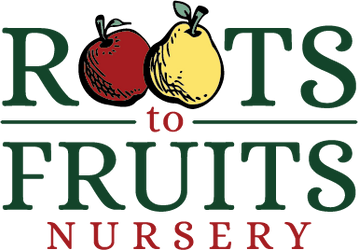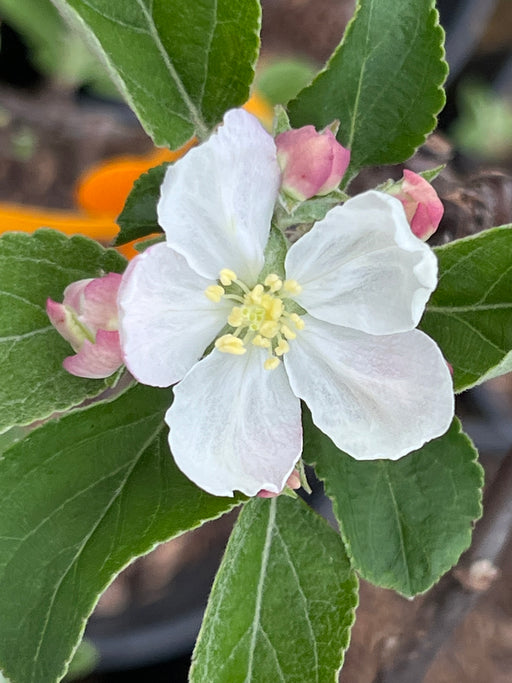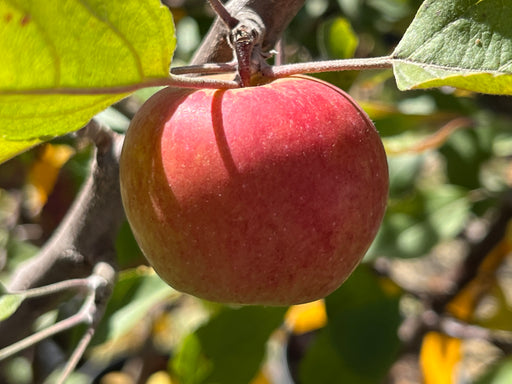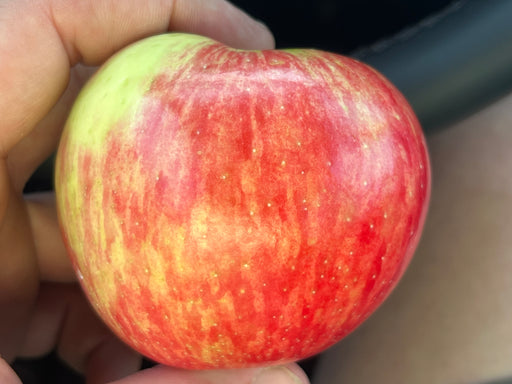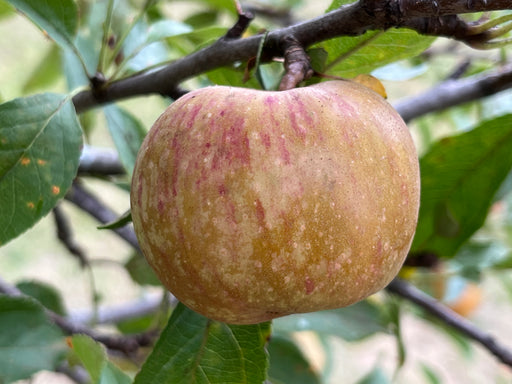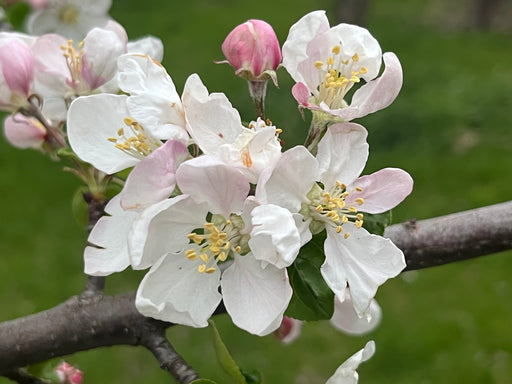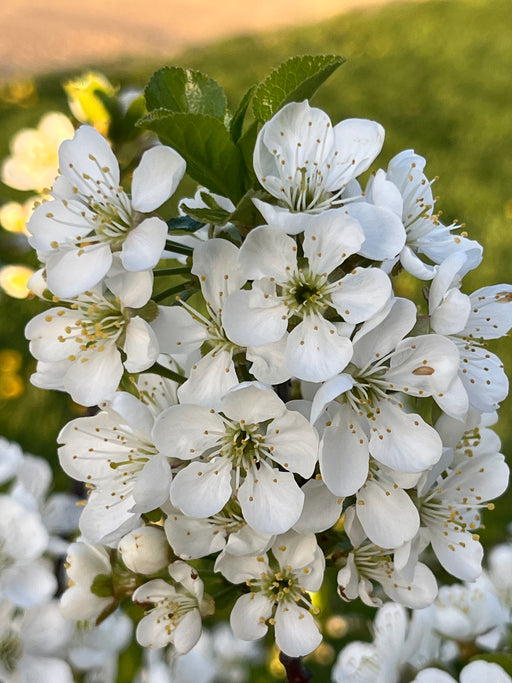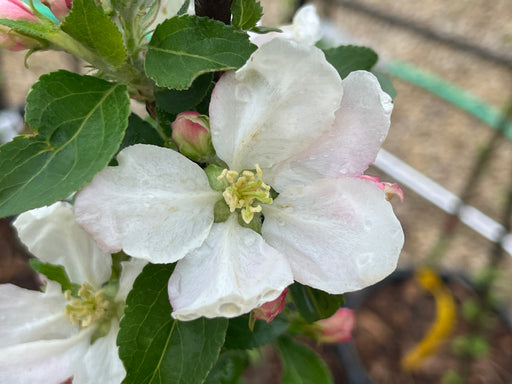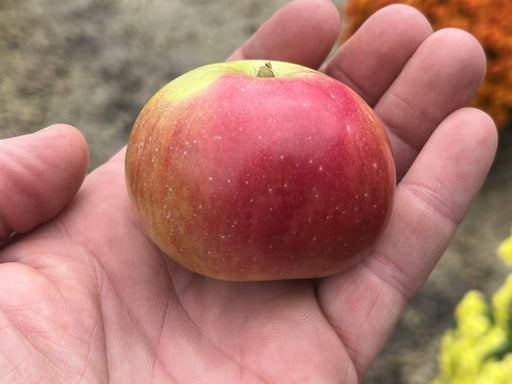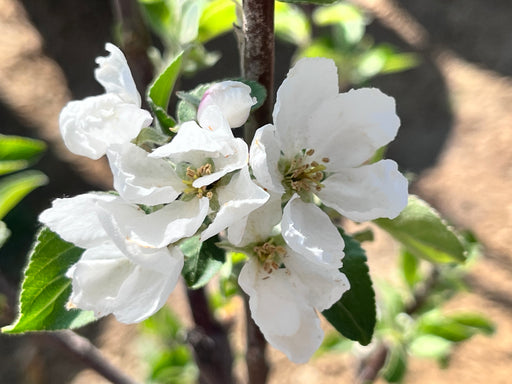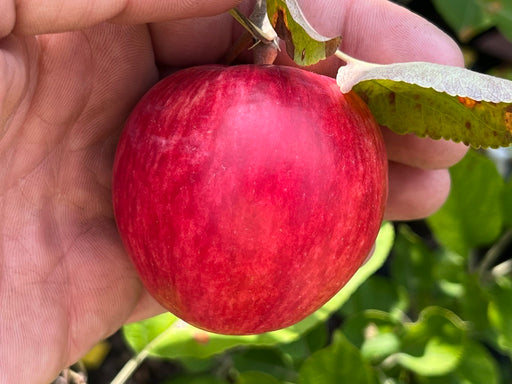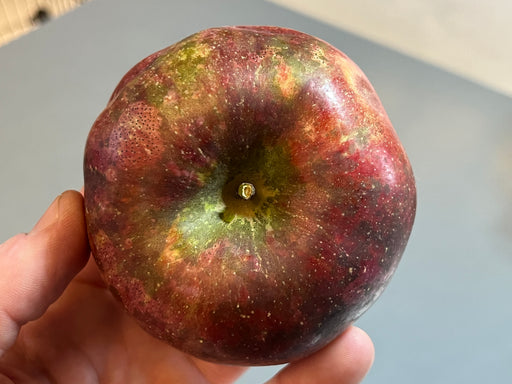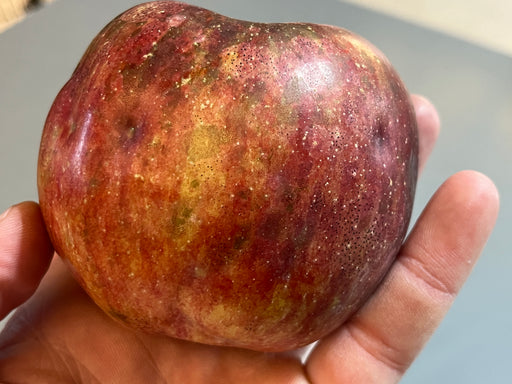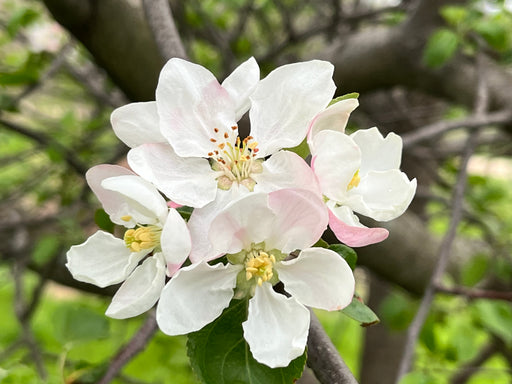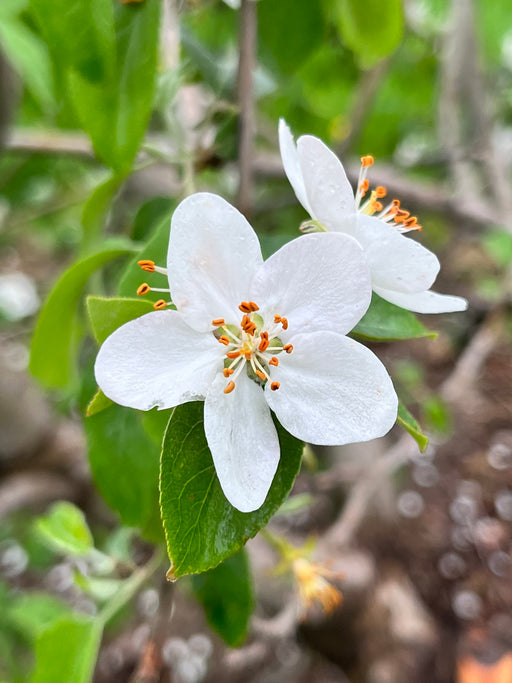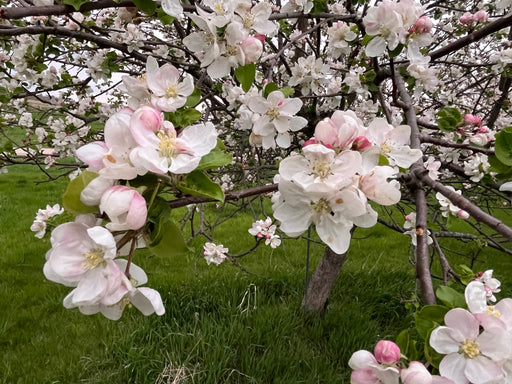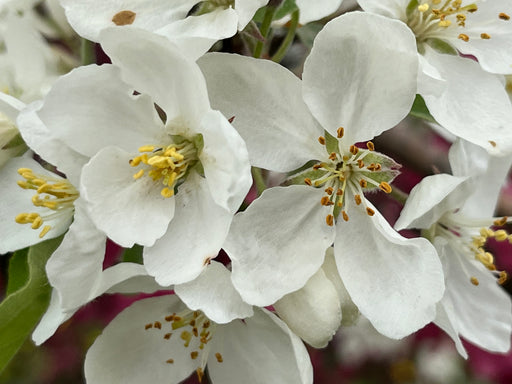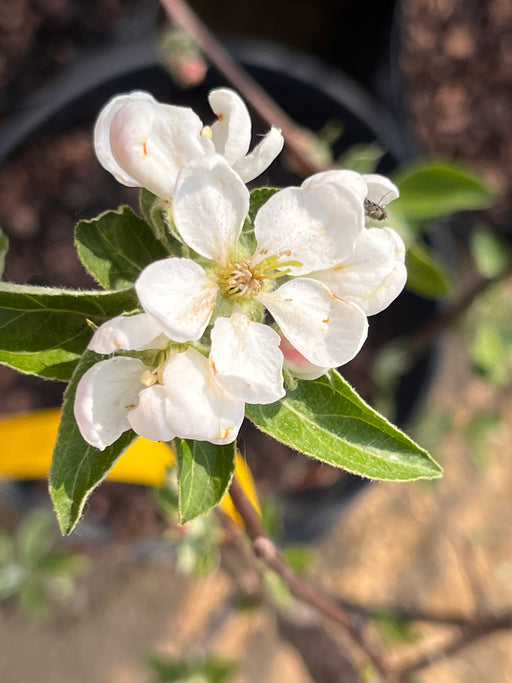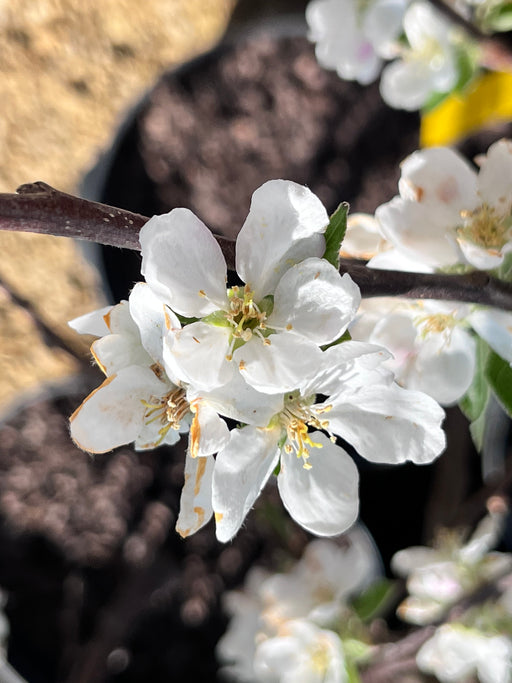Fruit Trees
Our apple trees, like many fruit trees, are propagated by grafting. There are two parts to an apple tree. The scion is the fruiting part of the tree, which gives you the variety of the apple, and the rootstock, which influences the mature size and hardiness of the tree, and determines the time it takes for the tree to fruit. We sell Standard, Semi-Dwarf, Dwarf, and Mini-Dwarf trees that do not require a lot of space and yet, will bear large fruit.
A few key notes on successful planting methods:
- Trees must be planted in well-drained soil
- Six hours of sunlight; full sun preferred
- Stake all trees for the first two years
- Dwarfs must have permanent stakes
- Tree guards should be used
- Plant at least two different apple tree varieties for Cross-Pollination
- Plant disease-resistant trees for less maintenance; we are happy to help make any suggestions you might need
We categorize our apple trees into at least five sizes: Petite, Maiden, Field Ready, Hand Select, and Container depending on the size of the tree. The Petite tree is our smallest graded tree less than 2 years in age; Maiden trees are usually 2 years old and are branchless. These are also called whips and will bear in 2-3 years. A Field Ready tree is 2-3 years old and might have some lateral branching, be thicker above the graft, and will bear in 1-2 years. The Hand Select trees are only about 20% of trees we have and are 3 year old trees, 6-9’ tall and can be heavily branched. You can expect fruiting on a Hand Select tree in about a year.
Binet Rouge Apple Tree
Grown in the Normandy region of France and noted as early as the 1870s, the Binet Rouge apple is primarily a cider apple. Designated as one of seve...
View full detailsSweet Apple Tree Bundle - 5 Trees
Honestly, who doesn't like a sweet apple? These apples have a high sugar content and are deliciously sweet to taste. Sweet apples make great cider ...
View full detailsSmokehouse Apple Tree
American Seedling of the Vandevere Apple discovered in Lampeter Township, PA. Discovered near the owner of the farm~ a Mr. William Gibbons'~ smokeh...
View full detailsBelle de Boskoop Apple Tree
1850s Heirloom Apple from the Netherlands. Dessert and culinary apple that keeps its shape when cooked. Generally sharper in flavor with denser fle...
View full detailsElstar Apple Tree
Dutch dessert apple first crossed in the 1950s. It can count the Golden Delicious in its parentage which gives the apple a well balanced flavor tha...
View full detailsPinova Apple Trees
Germany, 1990s. Cross between Golden Delicious × (Duchess of Oldenburg × Cox’s Orange Pippin). Excellent eater with crisp flesh and striated skin. ...
View full detailsLuscious Pear Trees
The Luscious Pear is a small to medium sized pear with bright yellow fruit. The tree is very cold hardy and resistant to fire blight. Similar in ta...
View full detailsKudos™ Apple Tree
Also known as MN33, the Kudos™ Apple is a newer apple tree out of the University of Minnesota released in 2022 and is a cross between the Honeycris...
View full detailsSundance Apple Tree
Description coming soon USDA Zone: 4-7 Mature Height: B.118: ~20 or 85% of Standard; Semi-Dwarf Ships Spring 2026 Sun: Full Sun Bloom Group: 2, Ear...
View full detailsReine de Pomme Apple Tree
Description Coming Soon! USDA Zone: Mature Height: M.111 ~18-21' tall; Semi-Dwarf Sun: Full Sun Bloom Group: Pollination: Required Ripen/Harvest Ti...
View full detailsNorland Apple Trees
The extremely cold hardy tree originated in 1980 by the Agriculture Canada Research Station in Manitoba, Canada, the Norland Apple is a cross betwe...
View full detailsFrost® Peach Tree
This newer peach that has recently become available and is designed to be resistant to leaf curl. Cold hardy and early to mid ripener. Tree is most...
View full detailsRoyal Limbertwig Apple Tree
Early 1800s cider apple. This variety is one of several Limbertwig variants that have regained popularity in the recent decades. First trees were p...
View full detailsFranklin Apple Tree
Description Coming Soon! USDA Zone: 4-8 Mature Height: M.7 ~15-17' tall; Semi-Dwarf Sun: Full Sun Bloom Group: 4, Late Mid-Season Pollination: Req...
View full detailsOrleans Reinette Apple Tree
European, probably French given the name, baking apple. First mentioned by the Dutch pomologist (apple expert) Johann Knoop in 1776 though was almo...
View full detailsSt. Martin Apple Tree
Bittersweet Vintage French Cider Apple. Mute red in color with creamy colored flesh. Ingredient in Calvados. Can be used as independent cider or bl...
View full detailsRed Spy Apple Tree
Discovered in New York in 1895 as a sport of the then common Northern Spy Apple. It is larger and redder than its parent yet retains much of the fl...
View full detailsPrima Apple Tree
Originally planted in 1958 at the Illinois Experiment Station in Urbana (a sub-section of the PRI Breeding Program) and was named Coop 2. The 'Prim...
View full detailsMormon Apricot Trees
Mid-to-late harvest season. Tree is medium in size and is spreading. Fruit is small. Skin color is orange with a red blush. Apricot is smooth in te...
View full detailsHellen's Early Pear Tree
Early ripening English cider pear. Discovered in the mid 1800s in Gloucestershire, England. lower tannin content makes it ideal for use in making p...
View full detailsGin Pear Tree
English Cider Pear. Generally smaller and greener than other pears. Pears grow in clusters along the entire branch and are almost decorative. Despi...
View full detailsBaker's Delight Apple Tree
Description Coming Soon! USDA Zone: 4-9 Mature Heights: B.9: ~10-12' Tall; Dwarf M.9-337: ~8-10' Tall, Dwarf G.935: ~12-14' Tall, Dwarf Sun: Full S...
View full detailsVeteran Peach Tree
An Oval shaped peach more oblate than other peaches. It is also fairly uniform in color. Tree is highly productive with a mid season harvest. Frees...
View full detailsSomerset Redstreak Apple Tree
Description coming soon USDA Zone: 4-7 Mature Height: B.118: ~20 or 85% of Standard; Semi-Dwarf Ships Spring 2026 Sun: Full Sun Bloom Group: 2, Ear...
View full details